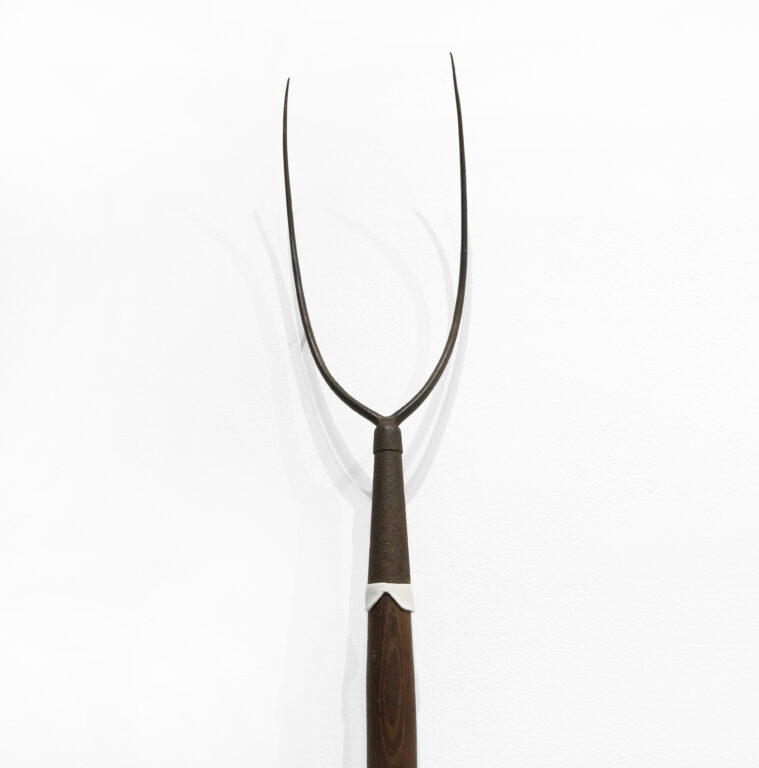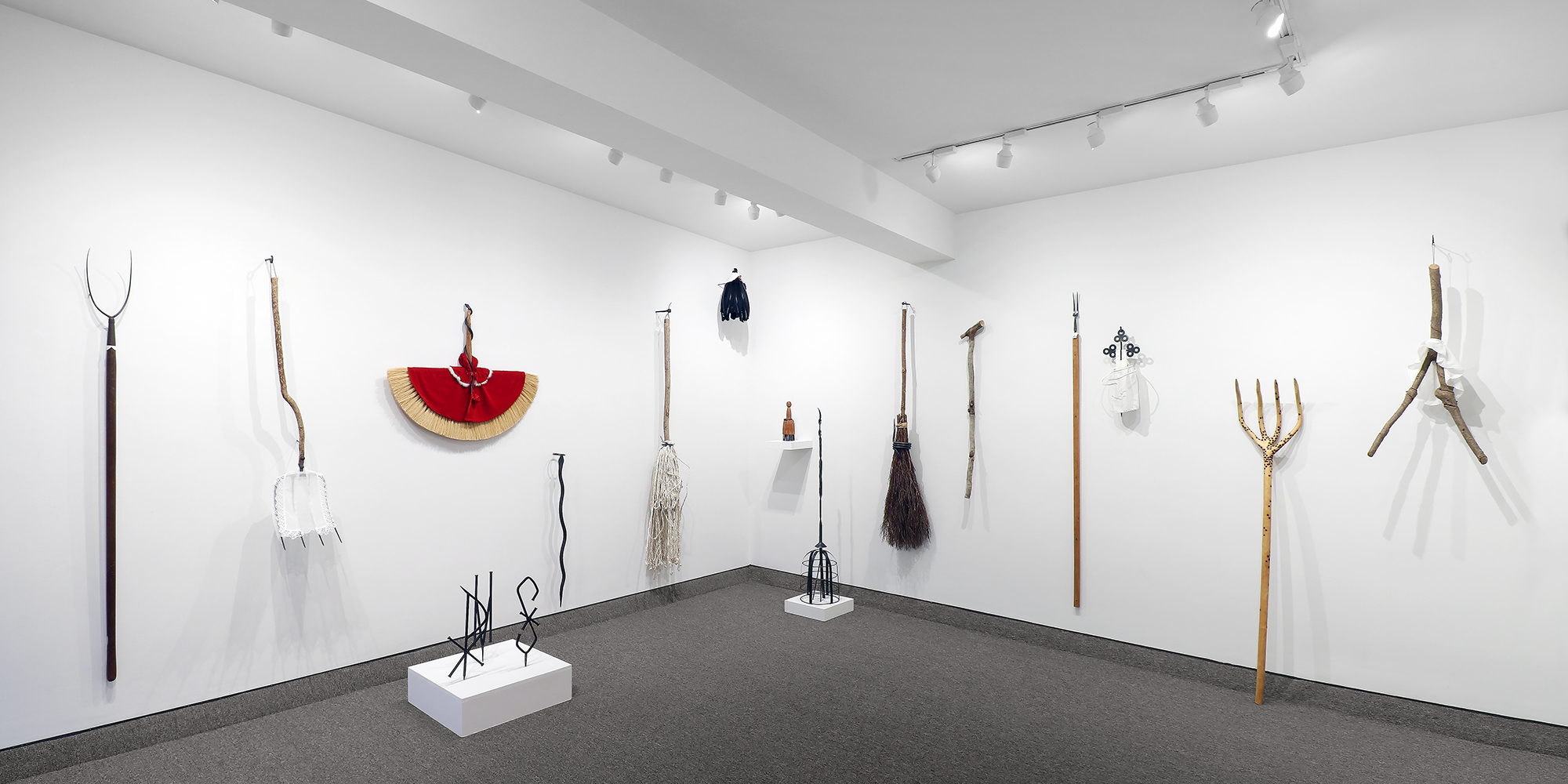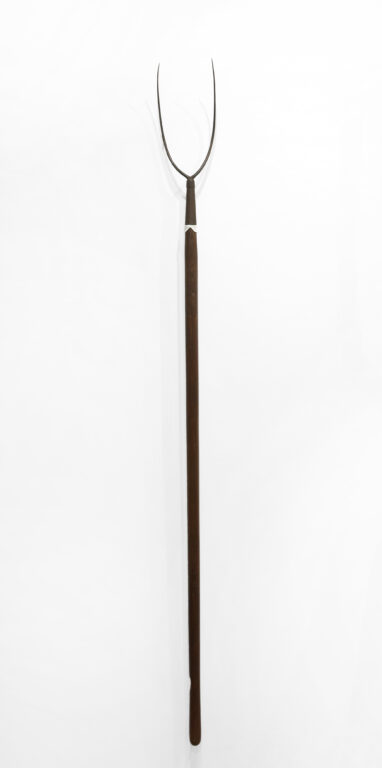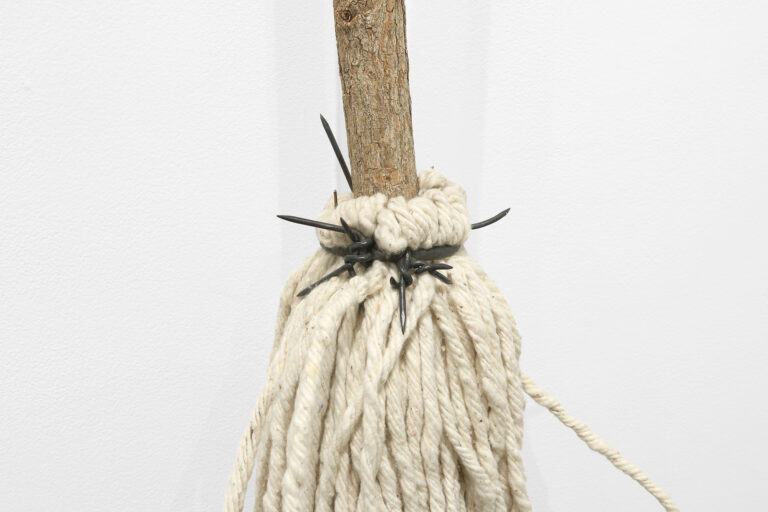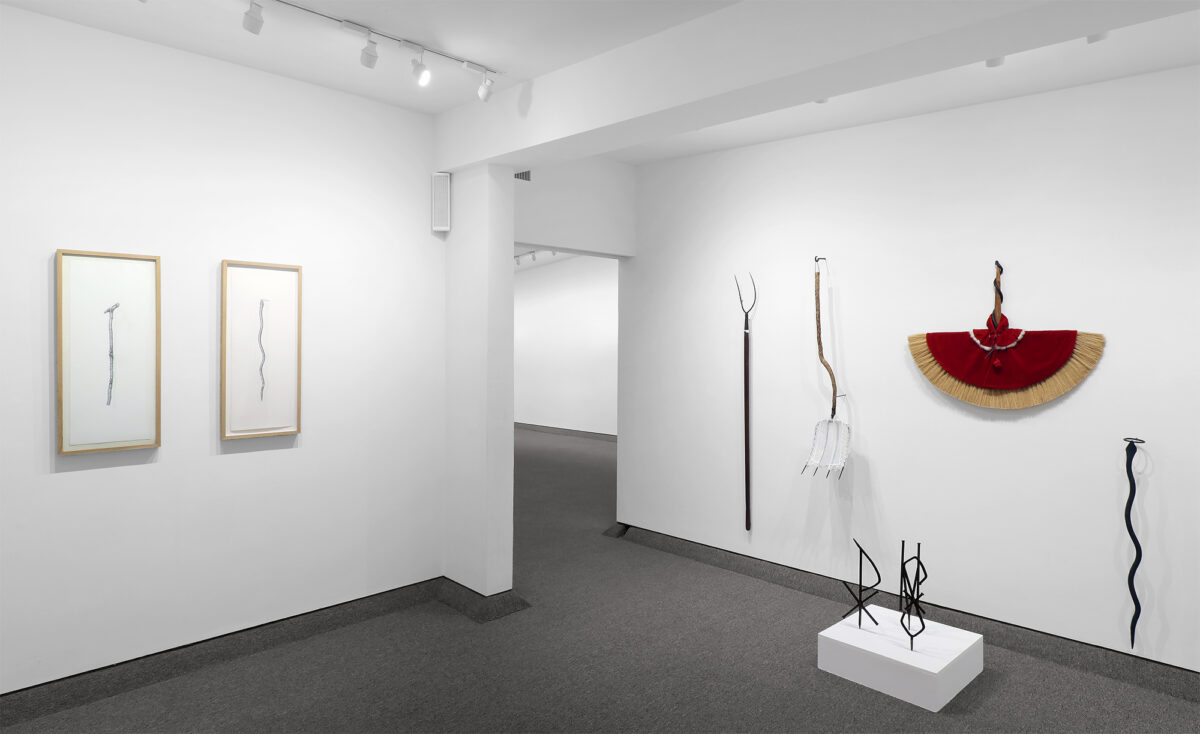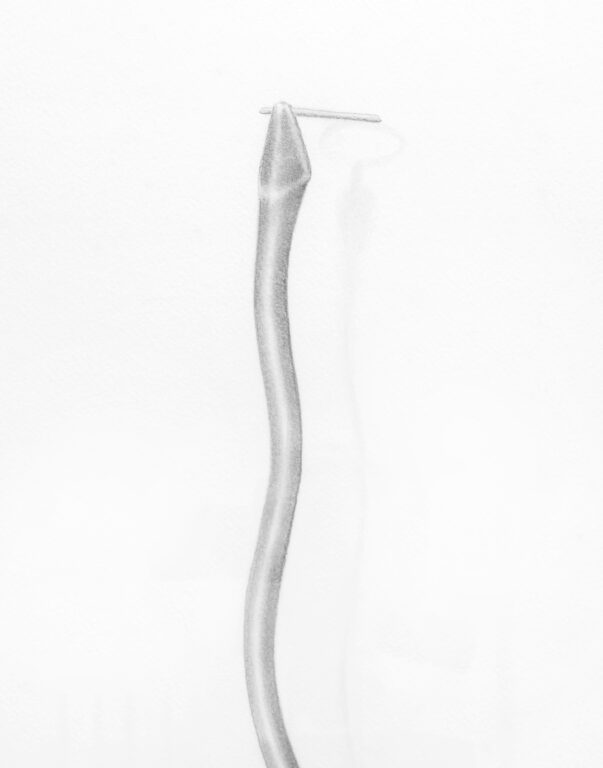Barbara Broughel’s “Requiem” portraits consists of brooms and other modest household objects of early American design, each one a “portrait” of a person accused, convicted, and/or executed as a “witch” in seventeenth century America. Based on court transcripts, each “portrait” is reconstructed from elements detailing the victim’s life and the “spectral evidence” (whereby an ill-fated event was considered to be caused indirectly through the supernatural powers of a person not present) used to convict them.
“Our contemporary culture is created from the suppositions, lessons, and beliefs of the past. Culture is constantly shifting – as more is learned about history and as more is forgotten. Barbara Broughel is an artist who works amidst this change. The force of Broughel’s work lies in her ability to synthesis a vast period of history, laws, and practices as they were brought to bear on an individual’s story and to extract elements of that story which reverberate with our current social standards. Throughout the series, Broughel places side-by-side the simple household articles, delicately made textiles, and elements of the punishments or evidence brought to bear against the victims, creating an unsteadying mixture of the ordinary life of the individuals, the hypocrisy of the charges, and the sadistic pain of the punishments. Viewers cannot escape the force of Broughel’s work with the easy sentiment “that could never happen now.” Rather, the unsettling, timeless motives of greed, mistrust of the unfamiliar, and scapegoating of the powerless shift the focus of the works away from the seventeenth century and direct it at the prejudices still afoot in contemporary society.”
—Mark Petr
Barbara Broughel’s artist statement:
REQUIEM
In the 1980’s, I learned that dozens of people were tried as witches in the theocratic colony of Connecticut. How could it be that I hadn’t known this? Many of these chilling events took place within miles of where I’d grown up… in my own back yard… and yet I had never heard of them, and so far as I could tell, no one else I knew had any knowledge of them either.
Never having been a “believer” so far as religion or the occult was concerned, I felt horrified for the victims of such a demented enterprise, and saddened, because the chilling facts seemed so incongruous with the image I’d always carried of my little hometown… Hartford, CT.
Which was more shocking?… that these horrors had occurred ?… or that the society I was reared into had never seen fit to acknowledge or document them having occurred? … no familiar names, no knowledge of what people had been accused of, no referencing of this in school, and no (accountability) or closure regarding what had taken place.
I wanted it to make it make sense… which meant getting as close to the TRUTH of the matter as possible. I wanted to understand who these people REALLY were.
I tried searching the facts in an array of sources and documents, only to find that the authors themselves were often intoxicated with superstitious bias and even a desire to believe in the “supernatural”… making it impossible to get a clear understanding of what had really occurred, and most importantly, of who the individuals really were who had their lives so viciously cut short and destroyed.
In the end, I based my research solely on primary sources, notably, the court transcripts derived from their trials. From these, I constructed the portraits of the 42 people in Connecticut and Massachusetts who had been persecuted, then prosecuted and finally convicted by their neighbors, pastors, local judges and magistrates. Often times at the outcome of these trials, lands were transferred from the executed accused to their accuser, or to other powerful beneficiaries.
These accused individuals were humiliated in every conceivably way. They were shackled and paraded through the streets, tortured to induce confessions, and routinely sexually abused… before being publicly executed; all of these behaviors justified by the theocratic court system as “devil exorcism”.
I found that suspected witches (80% of whom were women), were scapegoats for every conceivable misfortune as well as victims of their accuser’s imaginations and sexual obsessions. A wart, a mole, or freckle could be a “sign” that a suspect had been “kissed by Satan” and used as “evidence” enough to sentence them to death. The way a person dressed, talked, or moved their eyes, any suspicion, complaint, or envy they might arouse in their neighbors, or uniqueness of mind, could be used as evidence of the Devil inhabiting their flesh. Many were convicted on the basis of purely “spectral evidence” (whereby a person not present, causes an ill-fated event through supernatural powers).
“Requiem” is a gesture toward re-evaluating what took place, and exposing what passed for “the rule of law” under the Church-dominated court system of the New England colonies during this period in America’s history. It asks who are the real victims and who are the real villains in this chilling story? Who are the real monsters and who are the heroes?
Finally, “Requiem” is a modest attempt to pay homage, at long last, to the real flesh and blood women and men whose lives were lost so tragically to a toxic combination of superstition, greed, and malice.
—Barbara Broughel, 8.1.23
The artist would like to acknowledge Barron Brown (blacksmith) and Barbara Decker (pattern maker and seamstress) for their contributions to this project.
